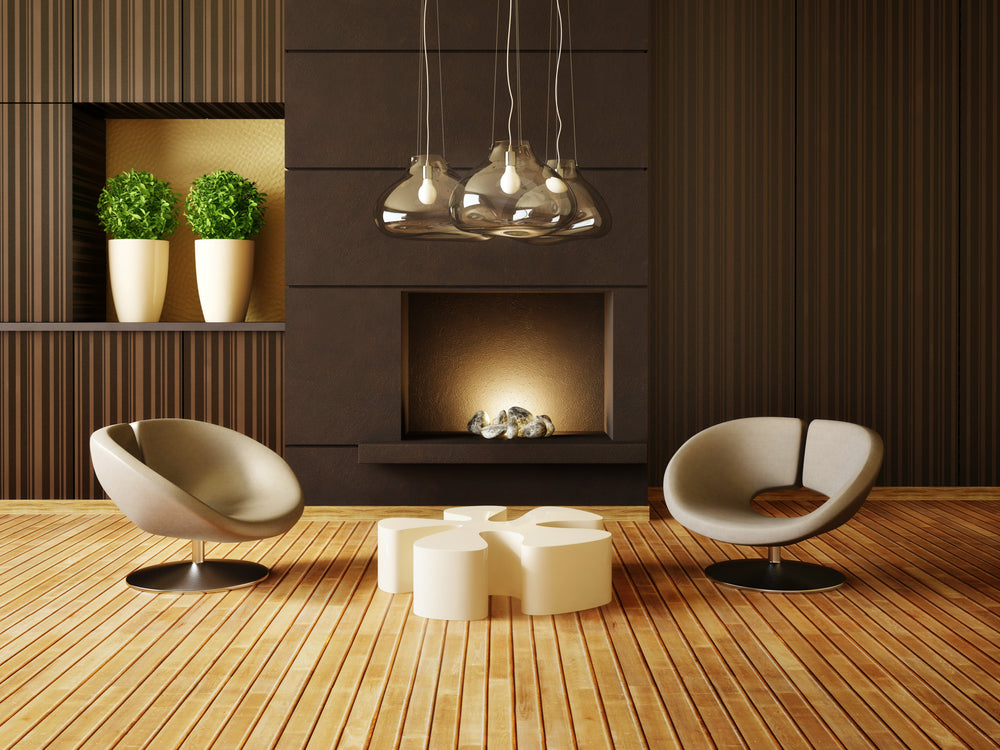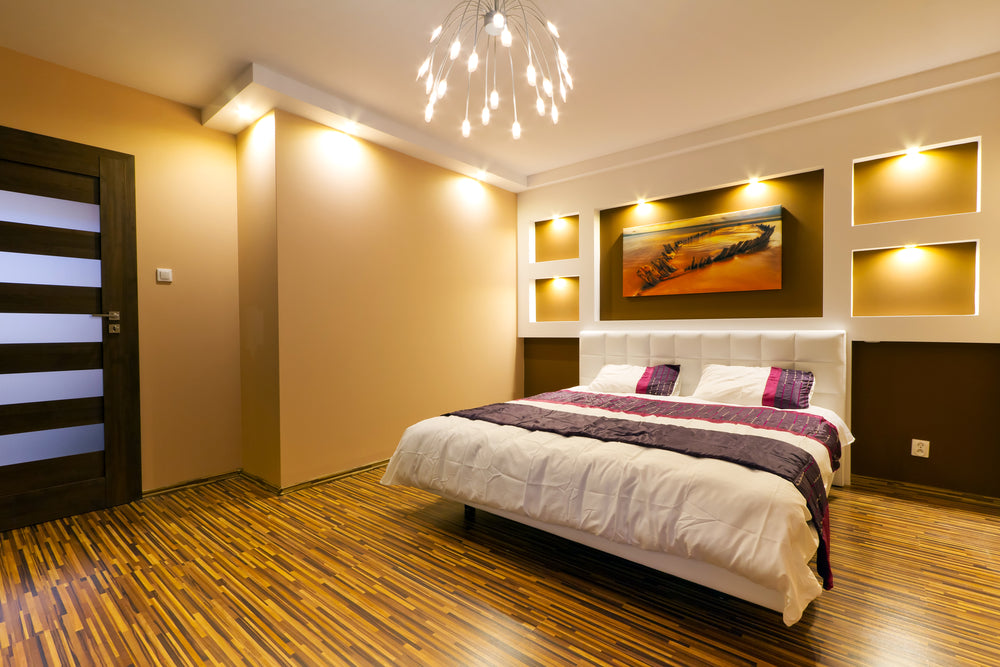Many factors influence interior light lamp life, one of which is that the lower the voltage, the less power, the longer the incandescent bulb life, and the crucial one you did not ask for, the lower the light efficiency, lumens per watt. On the other hand, when voltage rises, more watts, lumens, and energy are turned into each watt. This results in a decrease in bulb life. An incandescent light bulb's design trades efficiency for lamp life. Although you can't apply the voltage as high as you can with tungsten, more recent solid state lights essentially follow the same principle. Electricity-powered gas lamps function in the same manner.
Interior Light Voltage
Voltage is a measure of a system's electric potential or "pressure" when electricity flows through it. Voltage is also described as the speed of individual electrons as they go across a circuit and is measured in volts. We refer to the electrical pressure as voltage. In the US, households receive power from the electrical grid at two separate voltages, or "pressures," which are 120 and 240 volts. This is due to the fact that various household equipment run at various voltages. Most other gadgets, such as light bulbs, TVs, computers, and cell phone chargers, only require 120 volts, while large, energy-hungry appliances like air conditioners, electric stoves, and clothes dryers run at 240 volts. The term "Volt" refers to the Italian physicist Alessandro Volta, who about 1800 built one of the first batteries.
Interior Light Wattage
Wattage is presumably the most often used of all these electrical units. You've been purchasing 40- and 60-watt light bulbs for years, generally knowing that the former will produce a brighter light than the latter. However, why? It turns out that wattage refers to the amount of electricity that an electric device consumes. The term "wattage" can also refer to "electricity at work" or the amount of power needed to carry out an activity, as using a vacuum (400 to 900 watts), ringing the doorbell (2 to 4 watts), or putting on a light bulb (40 to 75 watts). Watts is the unit of measurement for electricity required to convert to lumens. Wattage can be calculated by simply multiplying voltage (pressure/speed) by amperage (volume), which can be written as V x A = W.
The wattage increases with the speed at which an electron travels through the circuit and the circuit's capacity to hold a larger volume. The watt is the unit of measurement for wattage, named for the Scottish engineer James Watt, who invented the steam engine. Do you believe you know everything there is to know about light bulbs? It's time to face facts, then. The two seemingly meaningless numbers on the package of the lightbulb. Indeed, I am referring to wattage and voltage, which are more powerful than you may imagine. These are important indicators that can have a big impact on your home's safety, energy efficiency, and lighting quality. They're not simply arbitrary numbers. You should be. Stay tuned as we explore the intricacies of light bulb voltage and wattage, elucidating their enigmas and demonstrating how they have the power to significantly impact your home's lighting scheme.

Watts vs Volts in Light Bulbs
Watts and volts are two concepts that can cause a lot of misunderstanding when it comes to light bulb comprehension. These may sound like arcane terminology reserved for electricians, but anyone looking to light their home effectively and efficiently can benefit much from knowing them. Let's dissect these phrases and how they relate to one another. Although they are two sides of the same coin, voltage and wattage have different functions in the lighting industry. In essence, voltage is the "pressure" or electrical force that pushes electricity through the lightbulb. When you flip the switch, it's what starts the process by turning on the lightbulb. In contrast, wattage is a measurement of power usage. It indicates the energy consumption of the lightbulb in terms of lumens.
How to Choose the Right Combination
Achieving the intended lighting effect and energy efficiency are just as important considerations as technical compatibility when choosing the proper voltage and wattage combination for light bulbs. For instance, a high wattage, low voltage light bulb may not be as brilliant as you would want, but it will use less energy. On the other hand, a high-voltage, low-wattage bulb might be more bright, but it might not be as energy-efficient. It's all about striking a balance. While you don't want to sacrifice brightness, you also don't want your energy costs to soar. It's important to recognize your unique needs. Does reading require strong light, or does ambiance require softer light?

Interior Light LED Bulbs Voltage and Wattage Specification
Regarding LEDs, a 25 watt bulb is comparable to a 2 watt LED, a 40 watt bulb to a 5 watt LED, a 50 watt bulb to a 7 watt LED, a 75 watt bulb to a 9 watt LED, and a 100 watt bulb to a 12 watt LED. The fact that LEDs consume significantly less energy than incandescent lights is understandable. For example, the corresponding LED bulb uses around one-twelfth of the energy required to achieve the same amount of illumination as a 25w traditional bulb. This may appear to be a simple concept, but when it comes to LEDs, it is really easier to think in terms of lumens (light output) than power.
For instance, you will need an LED that produces between 700 and 800 lumens for the majority of applications. Over 1,000 lumens will be sufficient for powerful light, while less than 300 lumens will do for basic lighting. You can select the color temperature of the light produced by LEDs as well. This could have a warm glow, a cold or neutral white, or a yellowish white to mimic the type of light produced by the sun.
Choosing the Best Bulb Wattage
The Right Wattage for a Ceiling Light Fixture
The labels on the actual bulb sockets are the first place to look. It's not too difficult to match the details on the box with the restriction for single fixtures. Remember that a fixture with multiple bulb compatibility probably has a combined wattage limit. The total number of lights utilized in this fixture should not surpass this ceiling. Overflowing the limit on a lightbulb fixture can be dangerous and dangerous for both the bulb and the fixture.
The Right Wattage for a Interior Light Lamp
The label of the item should state its maximum wattage. Get in touch with the manufacturer if it isn't provided. Generally speaking, most bulbs have a 60 watt maximum capacity. The good news is that domestic LED bulbs typically use far less energy than 60 watts because they generate equivalent or more lumens for a lower power consumption than comparable alternatives.

Low Voltage Interior Light
Low voltage LED lighting consumes less than 50 volts of power (usually 12 or 24). In American homes, low voltage lighting first appeared in the 1950s. Low voltage lighting was first created to help with landscape lighting, but it quickly spread indoors and is now widely used for a variety of lighting applications, including recessed, track, under cabinet, strip, and tape lighting. What makes low voltage lighting different from standard line voltage lighting, then?
Types of Low Voltage Lighting
There are various ways to use low-voltage lighting in your home. Low voltage under cabinet and cove lighting is ideal fo use to illuminate countertops, shelves, and other surfaces in kitchens, bathrooms, and closets. Recessed lighting with low voltage LED is excellent for general lighting both inside and outside. It is also excellent for providing focused light to accentuate specific features. Low voltage lighting is frequently ideal for use in the same areas and for the same objectives as line voltage lighting.
Low voltage choices are more widely ideal for use in outdoor lighting since they are easier to install. The majority of path and landscape lighting solutions are low voltage. Because trenching is not necessary, adding or relocating fixtures is simple and saves a significant amount of time and money. Because line voltage outside installations need to run in buried conduit to comply with electrical code standards, hiring an electrician is frequently necessary. Step lighting, low voltage well lighting, and spotlights can add more lighting to the outside of your house. LED string lights, often known as bistro lights, are another well-liked low voltage lighting effect. They look lovely and festive when strung from trees and above outdoor patios.
Conclusion
The quantity of electrical potential energy needed to start a current flowing across a circuit is known as voltage. It is measured in volts (V) and is often referred to as "electrical pressure." Power sources like batteries, generators, and solar cells provide voltage, which induces electrons to flow and produces an electric current. Selecting the ideal wattage requires more thought than just picking a number. Apart from the common general service light bulbs, there are numerous different possibilities available in the market.
There are still 15w–150w incandescent light bulbs available, however they are being phased out. Halogen lights have a different type of light and have a maximum power of 120w. Another option would be to use reflectorized bulbs, which concentrate light in a single direction to provide a significantly stronger beam at the same wattage. Whichever variety you choose, be sure you have sufficient knowledge before making the bulb purchase. Check out this article for more information. Visit the lighting collection page of our website for more information.










